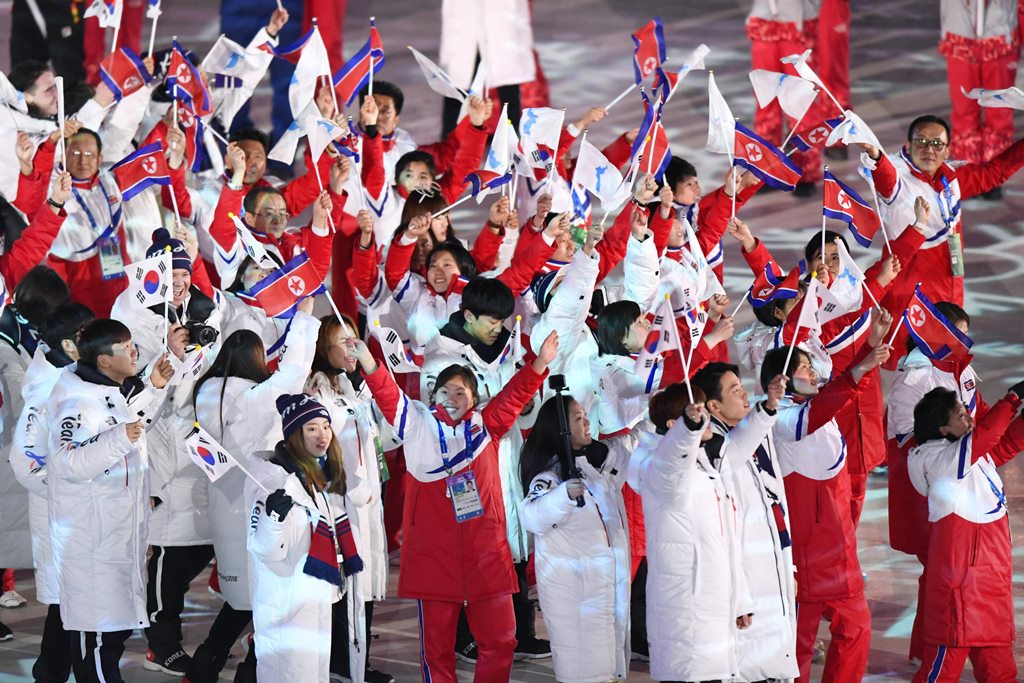Inter-Korean Summit: Still Waiting for a Breakthrough

What are the differences between the Kim-Moon summit and earlier ones?
In 2000 and 2007, summits were held in Pyongyang and were part of South Korea’s Sunshine Policy focused on a unification dialogue with North Korea and the development of inter-Korean cooperation. This time, the meeting took place on the southern side of the demilitarized zone, and the North Korean leader visited South Korea for the first time. The summit was primarily aimed at restoring highest-level contact between the Korean states after a decade of deteriorating mutual relations. It was also a result of diplomatic efforts by both Koreas to calm the situation after last year’s increase in tensions associated with North Korea’s numerous missile tests, its sixth nuclear test, and fear of a growing risk of conflict between the U.S. and North Korea.
What was included in the Panmunjom Declaration?
The declaration addresses three topics. First, an improvement in bilateral relations. It confirmed that unification should be led by Koreans on their own accord. South and North Korea agreed to establish a joint liaison office in Kaesong to facilitate regular contact and the two parties agreed to encourage more people-to-people exchanges (such as cultural cooperation) and proceed with reunification programmes for separated families. It also announced the modernisation of railways and roads connecting the two countries. Second, easing military tensions. South and North Korea agreed to cease “all hostile actions against each other” and to hold frequent meetings between military authorities. Third, cooperation to establish lasting peace on the Korean Peninsula. Korean leaders agreed to peace talks on a treaty that would end the Korean War and strive for a full denuclearisation of the peninsula. To maintain political contact at the highest level, it was agreed that Moon would visit Pyongyang this autumn.
Is the peace-treaty declaration groundbreaking?
By no means, as the pursuit of a formal end to the Korean War has appeared in all previous joint inter-Korean statements adopted at a higher level (1972, 1991, 2000, and 2007). Mention in the declaration of the U.S. and China as countries that should engage in talks on the treaty indicates that both Koreas agree that security problems on the Korean Peninsula should be discussed primarily in a four-party dialogue. This is because the U.S. and China played a key role in the Korean War and in negotiations on the armistice agreement, and they are currently the most influential powers shaping the situation on the peninsula. The emphasis that the treaty should be negotiated by the end of the year should be seen as a signal for the U.S. to take this issue into account in the forthcoming talks with North Korea.
What was the importance of the denuclearisation summit?
Declarations of denuclearisation (the common goal of a nuclear-free Korean Peninsula) have not gone beyond generalities. The summit did not answer whether North Korea is serious about denuclearisation. There was also no clarification and definition of what North Korea means by denuclearisation and what it expects in return. It was, therefore, confirmed that the inter-Korean dialogue is not a platform where denuclearisation details can be discussed. Only negotiations between North Korea and the U.S. gives this opportunity. However, North Korea’s recent decisions to halt nuclear and intercontinental ballistic missiles tests were recognized in the declaration as “very meaningful and crucial for the denuclearisation of the Korean Peninsula”.
What’s next?
The coming weeks will be marked by preparations for a summit between the leaders of the U.S. and North Korea. It is likely there will be an earlier meeting between Moon and U.S. President Donald Trump to coordinate positions on policy toward North Korea. The South Korean president will continue efforts to include other states in diplomatic activities on the peninsula. To this end, he talked with Russian President Vladimir Putin the day after the North-South summit, and on 9 May, this topic will appear during the first summit since 2015 of the leaders of China, Japan, and South Korea, in Tokyo. In turn, North Korea will try to strengthen its message of conciliation and even readiness to make concessions on the nuclear issue. To this end, the North has already signalled the possibility of inviting foreign experts and journalists to the planned closure of the Punggye-ri nuclear test site.




